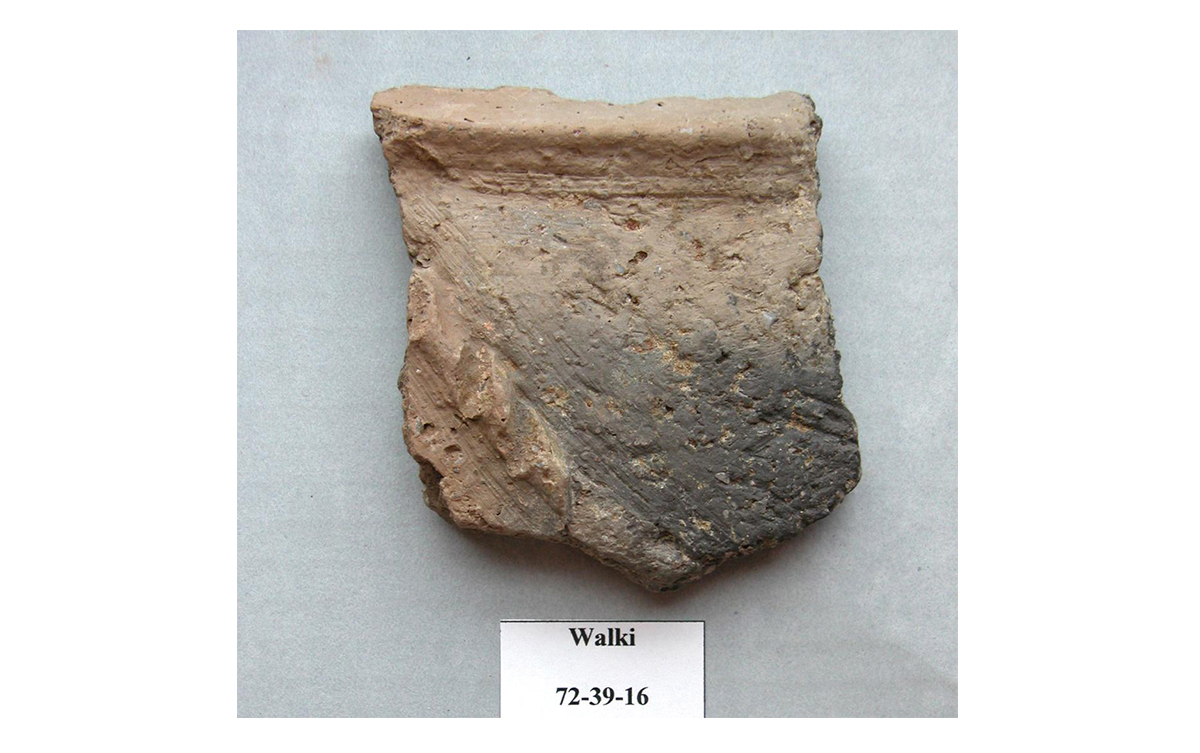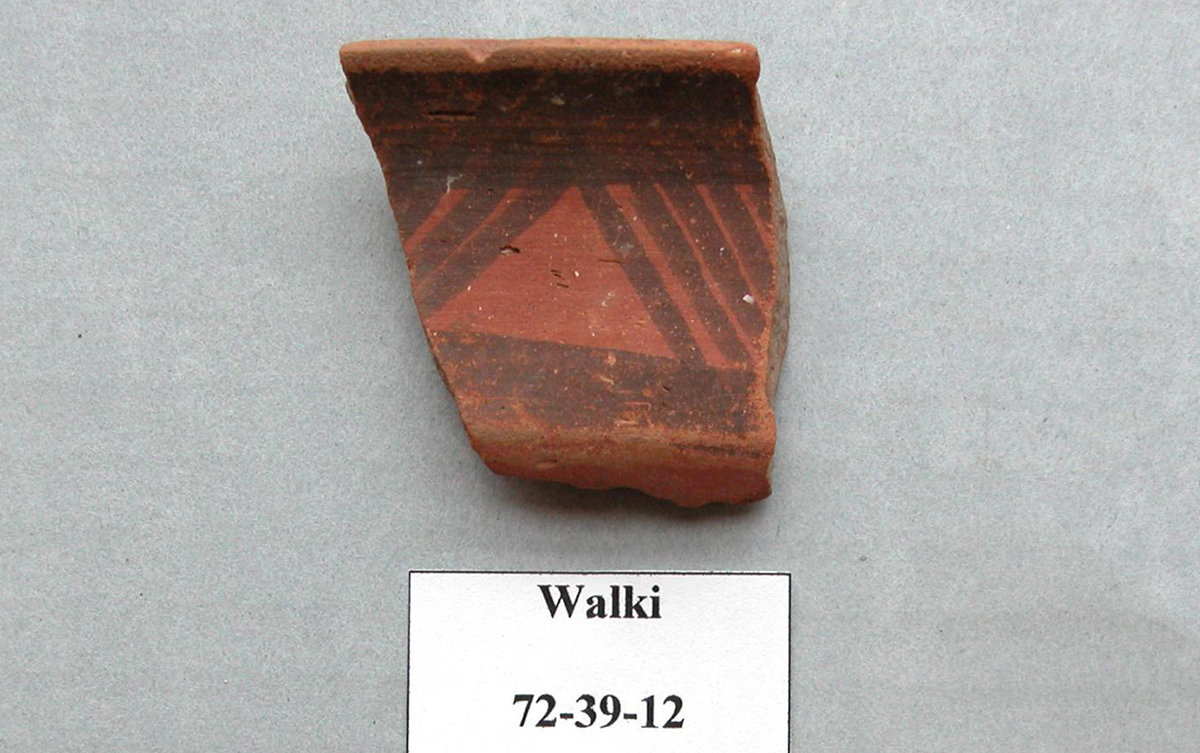ARTICLE
Jorwe Culture
Dated to the mid-second millennium BCE to 1000 CE during the Chalcolithic Period, the Jorwe Culture is a cultural sequence centred in present-day Maharashtra. The culture overlapped with and succeeded Malwa Culture and is believed to have originated from the migration of the Malwa Culture communities into the Deccan region, where they came into contact with existing Neolithic agrarian communities, resulting in a cultural synthesis. Evidence of the culture was first discovered during excavations in 1950–51 in Jorwe, Maharashtra, India, from which the culture derives its name.
The Pravara-Godavari basin in central Maharashtra is considered the nucleus of the Jorwe Culture. The culture extended over most of present-day Maharashtra, except for the coastal Konkan region, stretching from Purna Valley, Vidarbha, in the east to Theur, near Pune, in the west, and from the Khandesh region in the north to the Upper Krishna Valley in the south. The most prominent sites of the culture were Daimabad, Nevasa, Bahal, Prakash, Chandoli, Songaon, Theur and Inamgaon, with Prakash, Daimabad and Inamgaon being the largest in terms of settlement area. The major sites were located in river valleys, with Prakash situated near the Tapi valley, Daimabad in Godavari valley, and Inamgaon in the Bhima valley.
The culture is known for its distinct pottery, which was of a more refined quality than that of the preceding Malwa Culture. Pottery of the Jorwe Culture was of two types — the characteristic black-on-red pottery and the coarse red or grey ware. The former was of a fine fabric turned on a fast wheel and well baked. The red/orange surface of this pottery was painted with geometric patterns in black pigment. Objects made in this style included a concave-sided bowl with carination, a lota in the form of a spouted jar with a flaring mouth and high-necked jars. The red or grey ware was made with a coarse fabric and used for everyday objects such as storage jars, bowls, basins and lamps with niches for the wick. The red or grey ware was sometimes treated with red ochre on the rim, while the coarse forms had incised and applique patterns. Scholars suggest that the two types of pottery show distinct influences of the Malwa and southern Neolithic cultures, respectively.
Pottery artisans of the Jorwe Culture also used a specialised kiln, which was a large trough of clay built over a stone foundation, with a diameter of 1.75 metres. The fire chamber was at the base of the kiln and had clay cushions placed over it at a depth of 60 metres from the top. Outlets for hot gas were provided in the form of air ducts and grooves as well as holes on the clay cushions.
The houses of the Jorwe Culture followed those of the Malwa Culture, with rectangular plans, walls of wattle-and-daub construction and conical roofs. The spacing between the houses suggests a degree of planning in demarcating lanes. At Inamgaon, the western end of the settlement served as the artisans’ quarter, with excavations yielding evidence of specialists working in pottery, ivory carving, metalworking in copper and gold and lime-making. The houses in the central part of Inamgaon likely belonged to wealthier individuals, on the evidence of repairs carried out to the structures. Daimabad also had traces of a fortification wall with a bastion, made of mud.
Farming, hunting and fishing were the primary sources of sustenance. Barley and wheat were the main crops and the domesticated animals included cattle, buffalo, goat, sheep and pig. Both domesticated and hunted animals were consumed, and were cooked in large fire pits, such as the one found at Inamgaon.
The culture mostly used stone tools and had a specialised blade and flake industry, which used materials such as chalcedony and agate. The use of copper and bronze was limited and included implements such as axes, fish hooks, chisels and knives. The site of Inamgaon yielded evidence of a special furnace built to extract copper from chalcopyrites, which bears stylistic resemblance with Bronze Age furnaces excavated in present-day Israel. Artefacts of the culture included microliths, copper objects, beads and terracotta figurines. Among the terracotta artefacts was a cylinder seal depicting a horse-drawn chariot. Personal ornaments included bangles of shell, ivory and copper, as well as ornaments made of chalcedony, agate, jasper and carnelian.
According to scholars, the presence of artisans in goldworking and ivory, as well as the use of shell in ornaments suggested that the Jorwe Culture had contact with surrounding regions. The shell may likely have been sourced from the Kutch and Konkan coasts and the ivory and gold may have been derived from present-day Karnataka. Inamgaon and Daimabad may also have been centres of pottery production, supplying wares to other sites of the culture. The presence
of Jorwe pottery at Navdatoli in Madhya Pradesh and T Narasipura in Karnataka further suggest cultural links with regions in the north and the south.
Some of the terracotta items recovered from the sites are believed to have had religious or ritual significance. Figurines made of baked and unbaked clay, believed to depict female figures, were found at Inamgaon and Nevasa. A notable figure found at Nevasa had a stem-like form, with a pinched segment at the top indicating a head, pinched clay indicating breasts and curved projections for hands. In addition to this, figurines of bulls, a boar, a horse and an owl were found at the site. At Inamgaon, two figures were found in a house, with the breasts being the only detailed anatomical features; one of the figures was set into an oval receptacle over which a headless female figurine and a bull had been placed. According to scholars, both female figurines could be considered depictions of goddesses. The bodies of the headless figurine and the bull also had niches which, when joined together, showed the figurine seated on the bull.
They followed the practice of urn burials for children. Adults were buried in an extended position with the feet cut off below the ankle, possibly to prevent the spirit of the individual from travelling into the living world. Burial pits also yielded evidence of painted Jorwe ware vessels that may have held food and water for the dead.
The culture began an abrupt decline c. 1000 BCE, continuing in a degenerate manner only at Inamgaon, where the pottery and settlements showed signs of decline in terms of quality and the size of the houses. According to scholars, this decline may have been the result of a climatic event such as increased aridity or famine, which may have led to population migrations. Additionally, scholars suggest contact with southern Deccan c. 800 BCE based on the presence of black and red ware.
Bibliography
Dhavalikar, M. K. “Early Farming Cultures of the Deccan.” In Essays in Indian Protohistory, edited by D. P. Agrawal and Dilip K. Chakrabarti, 247–65. Delhi: BR Publishing Corporation, 1979.
Dhavalikar, M. K. “Genesis of the Jorwe Culture.” In Studies in Indian Archaeology, edited by S. B. Deo and M. K. Dhavalikar, 32–42. Bombay: Popular Prakashan, 1970.
Sankalia, H. D., Z. D. Ansari, and M. K. Dhavalikar. “Inamgaon: A Chalcolithic Settlement in Western India.” Asian Perspectives 14 (1971): 139–46. http://www.jstor.org/stable/42927752.
Singh, Upinder. A History of Ancient and Early Medieval India: From Stone Age to the 12th Century. Noida: Pearson India Education Services, 2016.










